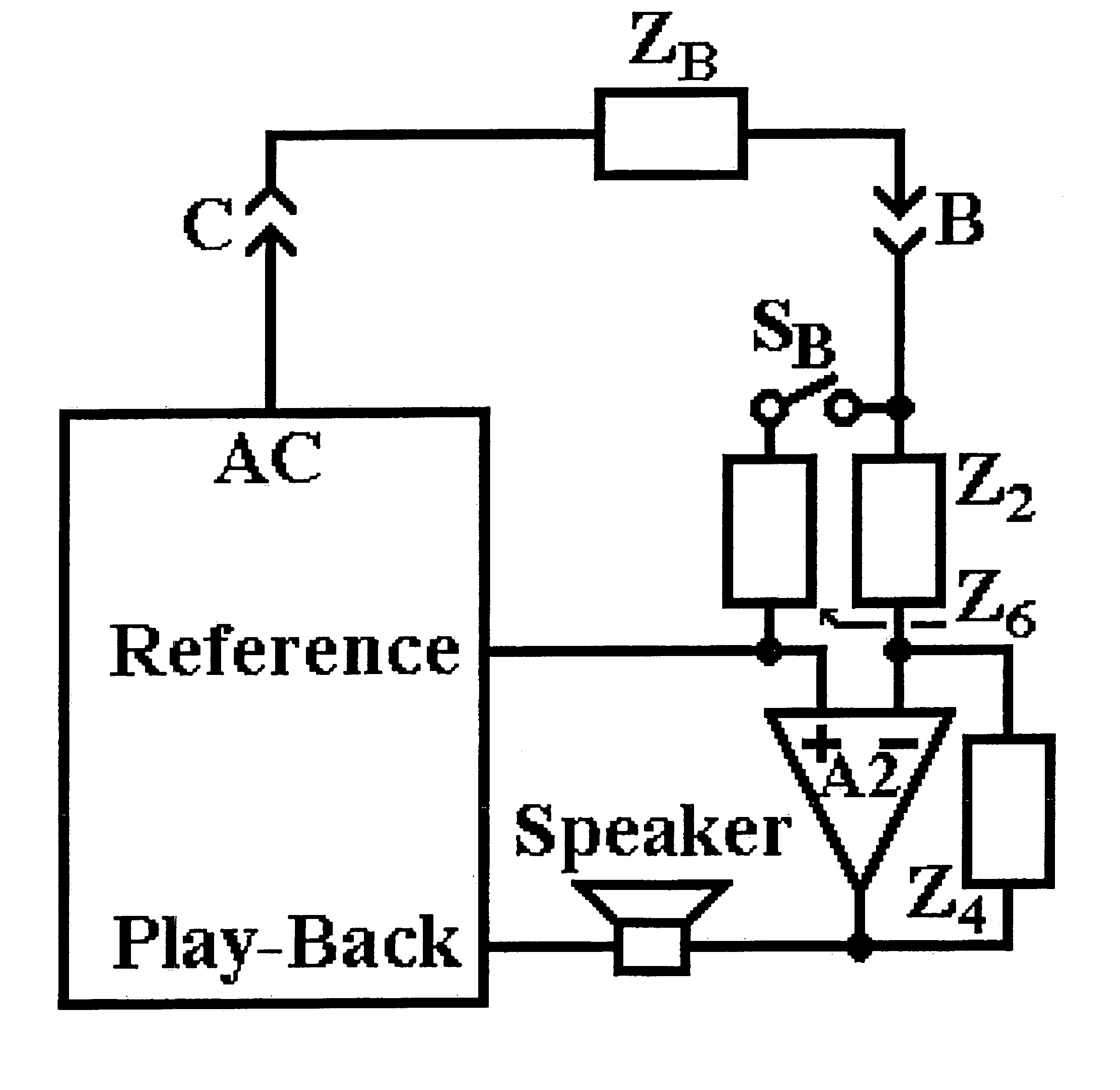Device to audibly express impendance measurement
a technology of impendance measurement and audible expression, which is applied in the direction of coupling devices, instruments, electrical equipment, etc., can solve the problems of inability to check reactive impedances, use visual feed back, and is relatively expensive, and the current methods are not primarily geared for comparison
- Summary
- Abstract
- Description
- Claims
- Application Information
AI Technical Summary
Benefits of technology
Problems solved by technology
Method used
Image
Examples
Embodiment Construction
[0008]The Operation of the Dynamic Impedance Comparator is explained using the following thirteen (13) diagrams.
[0009]FIG. 1. An Audio Frequency Voltage Generator called ‘AC’, whose Output is applied to the points labeled ‘In’, in Figure two (2) through Figure six (6).
[0010]FIG. 2. (The Fundamental Circuit). A Resistive Bridge where ‘R1’ equals ‘R2’, and ‘RA’ and ‘RB’ are of unknown value. ‘R1’ and ‘R2’ also act as current limiters in the Circuit. Any difference in the Resistances of ‘RA’ and ‘RB’, causes a Voltage to be present across the points labeled ‘Out’. The Circuit can be said to consist of two halves. One consisting of ‘RA’ and ‘R1’, and the other consisting of ‘RB’ and ‘R2’.
[0011]NB. If any Measuring Device were to be connected across the terminals labeled ‘Out’, the power drawn by this Device, would change the Voltage across these terminals, hence the following configuration.
[0012]FIG. 3. Operational Anplifiers (Op-Amps) ‘A1’ and ‘A2’, and Resistors ‘R3’ and ‘R4’ with res...
PUM
 Login to View More
Login to View More Abstract
Description
Claims
Application Information
 Login to View More
Login to View More - R&D
- Intellectual Property
- Life Sciences
- Materials
- Tech Scout
- Unparalleled Data Quality
- Higher Quality Content
- 60% Fewer Hallucinations
Browse by: Latest US Patents, China's latest patents, Technical Efficacy Thesaurus, Application Domain, Technology Topic, Popular Technical Reports.
© 2025 PatSnap. All rights reserved.Legal|Privacy policy|Modern Slavery Act Transparency Statement|Sitemap|About US| Contact US: help@patsnap.com



